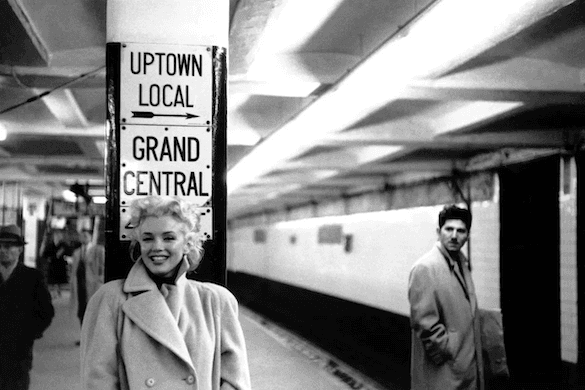Marilyn Monroe and the American Way of Life
In her attraction to the playwright Arthur Miller, she was acting upon her own quest for Superman, truth, justice, and the American way, and was bound to be disappointed.

‘The American Way: A True Story of Nazi Escape, Superman, and Marilyn Monroe’
By Helen Stapinski and Bonnie Siegler
Simon & Schuster, 384 pages
‘On Marilyn Monroe: An Opinionated Guide’
By Richard Barrios
Oxford University Press, 280 pages
‘My Maril: Marilyn Monroe, Ronald Reagan, Hollywood, and Me’
By Terry Karger
Post Hill Press, 256 pages
‘Arthur Miller: American Witness’
By John Lahr
Yale University Press, 264 pages
So how does Marilyn Monroe figure in a tale about Nazis, Superman, and the American Way? She comes into the picture by way of Jules Schulback, who escaped Nazi Germany with the assistance of Harry Donenfeld, publisher of DC Comics, in which the adventures of Superman appeared.
Schulback, an amateur filmmaker and Bonnie Siegler’s grandfather, happened upon the scene of Billy Wilder shooting Marilyn Monroe in that famous skirt that flew up heavenward in take after take in an exploitation scene that revolted Joe DiMaggio and humiliated the movie star.
As Monroe posed and glowed in freezing weather, Schulback began to film her, later telling his family about the footage no one else had, since Billy Wilder evidently destroyed his and reshot a much more sedate take in Hollywood. But as Ms. Stapinski and Ms. Siegler say, “there was more to it than that, something primitive and sacrificial.”
Even as skirt-blown, billboarded Monroe towered stories high on a skyscraper facade in Times Square, she felt devoured by the American desire to consume her: “At one point her strappy high heel got stuck in the subway grate,” on what was supposed to be a hot summer night as a rush of air cooled her undies. She “laughed, bent over, and pulled out the shoe and put it back on. Some laughed along with her. Most just just leered and catcalled.”
“But not Jules.” He was there to take it all in with his camera in film that was lost and then found again, thus vindicating what his family thought was just a tall tale.
“The American Way” is a loose-hinged book, throwing together the moving story of Jules Schulback, who survived the Holocaust, with the often comical American sense of truth and justice reduced to malarky about superheroes.
Much of the stuff in “The American Way” is secondhand, yet the authors keep putting that jejune material into some striking and revealing sentences.
I can’t say as much for Richard Barrios’s cliché ridden book: “Norma Jeane rose to that particular challenge [becoming Marilyn Monroe] with a vengeance”; movie studios during World War turned out “product like there was no tomorrow”; when Monroe meets Joe DiMaggio, “a number of sparks flew.”
We get closer to the grain of the woman herself in “My Maril,” a memoir that contains some misinformation but also intimate accounts of an actress who valued friendship and thought of the Kargers as family, even after her one-year affair with Terry Karger’s father ended. The same was true with Arthur Miller’s father, whom Monroe treated with great tenderness and respect.
In her attraction to the playwright, she was acting upon her own quest for Superman, truth, justice, and the American way, and was bound to be disappointed. John Lahr shows how self-deceived his subject could be. Miller wrote an idealized version of his wife in “The Misfits,” which, to her, was an insult because he had mistaken her for the myth and missed the real woman.
Miller would not budge on his script, believing his wife wanted to violate his independence as a writer. Mr. Lahr neatly sums up Miller’s plight: “he had been traumatized by Monroe’s madness and by his own stupidity.”
Monroe partisans will take exception to “madness,” but Mr. Lahr hardly exonerates Miller. In Miller’s play, “After The Fall,” Maggie (the Monroe figure) has exhausted Quentin (the Miller figure), so that during a drug overdose, as she struggles to breathe, he admits he welcomes her death and his “coming peace,” and then asks: “How is that possible? I loved that girl.”
Mr. Lahr’s verdict: The play declares Quentin/Miller “guilty, only to let him off for good behavior.”
It seemed an odd coupling at the time, what the press called “the egghead and the hourglass,” but these books reveal that such contradictions are the American way.
Mr. Rollyson is the author of “Marilyn Monroe: A Life of the Actress,” “Marilyn Monroe Day by Day,” and “Female Icons: From Marilyn Monroe to Susan Sontag.”

